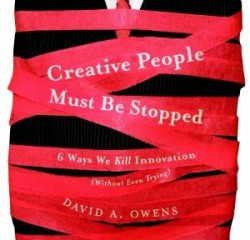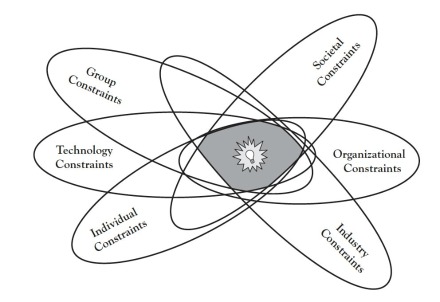https://youtu.be/ZHqy6wAvuHw
Why do some great ideas fail and others succeed? The innovations pioneered by someone like Apple CEO Steve Jobs may have less to do with “out of the box” creativity than with mastering – and overcoming – a set of fundamental constraints that span everything from technology to society to group dynamics.

Management professor David Owens of the Vanderbilt Owen Graduate School of Management says that business and other leaders need to understand exactly which of the constraints are working against them to help create conditions that foster innovation instead of killing it.
“Constraints are the parameters within which you must work. And for a creative person that’s actually a blessing,” said Owens.
After years of academic research, coupled with on-the-job experience at two technology design firms, Owens identifies the six most common hurdles to innovation that companies encounter.
SIX INNOVATION CONSTRAINTS:
- The Individual
Failures of innovation are failures of ideas. To meet this challenge, you simply need to train people to use the tools and processes that help them “think differently,” and this will enable them to become better at generating and recognizing good ideas.
- The Group
Even if you have a roomful of da Vincis, the group’s social climate will determine whether an innovation succeeds. The prescription that follows from this diagnosis is clear: fix the group’s climate, and you will fix innovation.
- The Organization
If a company or organization doesn’t have a strategy for innovation, or if it doesn’t have a structure that allows for the free movement of new ideas, or if it doesn’t have the human, monetary or other resources to expend on developing an idea, then it’s unlikely to nurture potential innovations within.
- The Industry
Innovation fails when a firm competing among a group of rivals in an industry fails to produce an innovation that customers in that market are willing to adopt. When buyers do not adopt a new offering because they fail to see the utility and value of it, you may be able to call that idea “creative,” but you cannot call it innovation.
- The Society
An innovation cannot succeed if a society does not see its ideals and aspirations embodied in it. Consider human cloning. It is technologically possible and might arguably have certain benefits. However, societies around the world have banned the practice on the grounds that it is morally and ethically repugnant.
- The Technology
 For an innovation to succeed, it has to be technologically feasible. The way to avoid failure is to advance our understanding and control of matter and energy through the use of science and technology. In other words, innovation is what we already know as research and development.
For an innovation to succeed, it has to be technologically feasible. The way to avoid failure is to advance our understanding and control of matter and energy through the use of science and technology. In other words, innovation is what we already know as research and development.
Owens says the constraint framework is not just relevant to products alone. It can be used to make all companies and organizations a success.
“We often think of innovation as product innovation, but we don’t often think of it as creating new processes or new services or even as changing our ways of thinking about things,” said Owens.
In his new book, Creative People Must Be Stopped: 6 Ways We Kill Innovation Without Even Trying, Owens writes that to spark true innovation, one must overcome the constraints in each of these six categories, as depicted in this Venn diagram:

“What we need is the kind of vision correction that will enable us to see in advance the vital factors that determine our chances for success when we embark on an innovation,” Owens writes. “This is just what the constraints framework is designed to provide. And by learning to analyze these constraints in advance, turning from retrospective analysis to proactive strategy development, you can dramatically improve your chances of innovation success.”